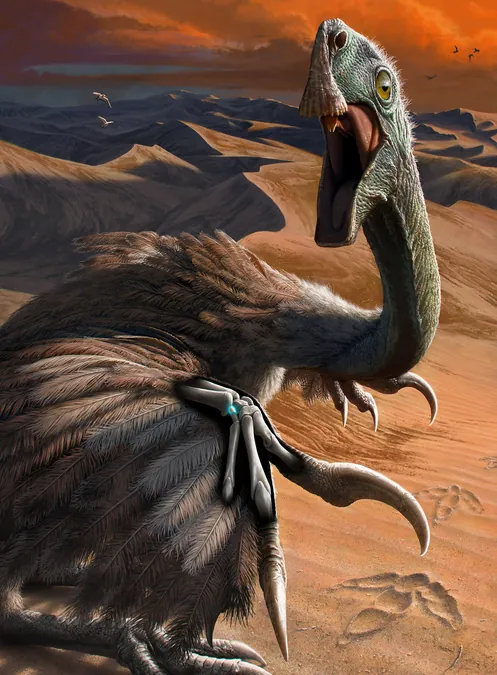
Revolutionary Discovery: Dinosaur Wrist Bone May Hold Key to Flight Evolution
2025-07-09
Author: William
A Groundbreaking Find in the World of Dinosaurs
A recent analysis of two theropod dinosaur fossils has made waves in the scientific community, revealing that these ancient creatures possessed a carpal bone known as the pisiform in their wrists—an essential feature for flight in modern birds.
Led by Dr. James Napoli from Stony Brook University, this groundbreaking research refutes older theories that insisted theropods lacked bird-like pisiforms. Published in the prestigious journal Nature, this discovery posits that the evolution of flight among dinosaurs might just hinge on the complexity of their wrist structure.
The Mysterious Pisiform: From Puzzling Past to Flight Essential
For years, the identity of a specific carpal bone crucial to birds was a mystery until researchers confirmed it as the pisiform. Initially functioning as a sesamoid bone—similar to a kneecap—this bone eventually migrated within the wrist, replacing the ulnare and facilitating the complex wing-folding mechanism we see in birds today.
With its unique V-shaped notch, the pisiform enables birds to clasp their hand bones securely, preventing dislocations during flight. This feature underscores its pivotal role in the avian anatomy.
Fossils of Two Unique Dinosaurs
The fossils examined in this study included a troodontid, akin to the bird-like raptor Velociraptor, and an oviraptorid—a peculiar, long-necked omnivore sporting a toothless beak. The exceptional preservation of these fossils, combined with high-resolution CT scanning technology, allowed researchers to isolate and study the wrist bones in unprecedented detail.
Collaborating with the American Museum of Natural History and the Mongolian Academy of Sciences, the team provided 3D visualizations that highlight the unique, bead-like carpals—migrated pisiforms previously unseen in non-avian dinosaurs.
A New Perspective on Dinosaur Flight
Dr. Napoli asserts, "This marks the first identification of a migrated pisiform in a non-bird carnivorous dinosaur." He emphasizes that while the exact timeline of when dinosaurs first attempted flight is still unclear, their findings suggest that features like the migrated pisiform were critical in leading to the flight mechanisms we observe in modern birds.
The researchers place this significant evolutionary advancement not within the clade of birds but with the origins of a very special group known as Pennaraptora. This included various theropod dinosaurs, such as dromaeosaurids like Velociraptor and other bird-like species where feathered wings began to form and the concept of flight likely evolved multiple times.
Looking Ahead: Future Research on Dinosaur Evolution
As fascinating as these findings are, Napoli highlights the need for further research to better understand how the dynamics of dinosaur wrist bones contributed to their enigmatic evolution. With this discovery, scientists are closer than ever to unraveling the complexities of how flight emerged in the lineage leading to modern birds.









 Brasil (PT)
Brasil (PT)
 Canada (EN)
Canada (EN)
 Chile (ES)
Chile (ES)
 Česko (CS)
Česko (CS)
 대한민국 (KO)
대한민국 (KO)
 España (ES)
España (ES)
 France (FR)
France (FR)
 Hong Kong (EN)
Hong Kong (EN)
 Italia (IT)
Italia (IT)
 日本 (JA)
日本 (JA)
 Magyarország (HU)
Magyarország (HU)
 Norge (NO)
Norge (NO)
 Polska (PL)
Polska (PL)
 Schweiz (DE)
Schweiz (DE)
 Singapore (EN)
Singapore (EN)
 Sverige (SV)
Sverige (SV)
 Suomi (FI)
Suomi (FI)
 Türkiye (TR)
Türkiye (TR)
 الإمارات العربية المتحدة (AR)
الإمارات العربية المتحدة (AR)